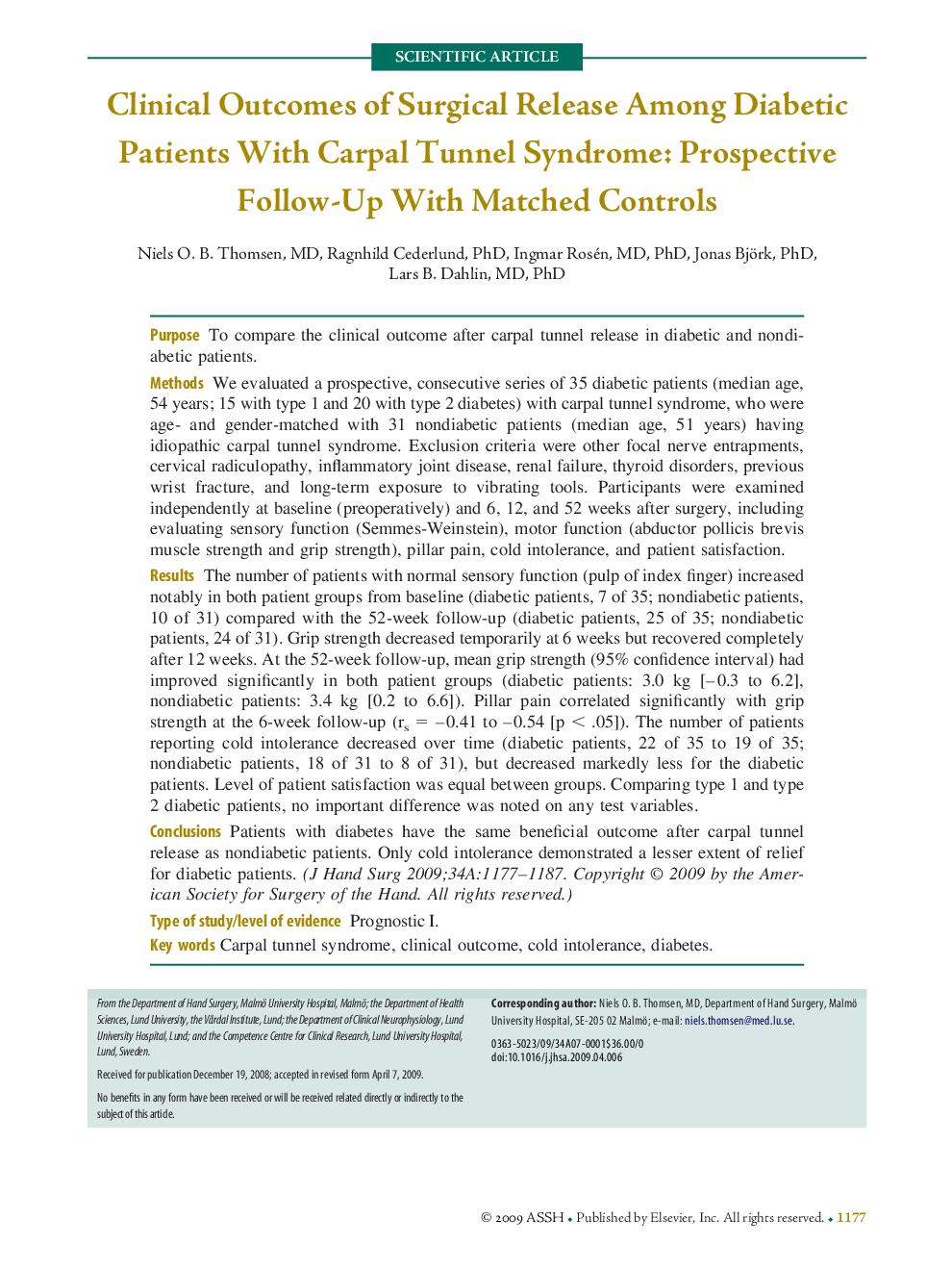| Article ID | Journal | Published Year | Pages | File Type |
|---|---|---|---|---|
| 4070578 | The Journal of Hand Surgery | 2009 | 11 Pages |
PurposeTo compare the clinical outcome after carpal tunnel release in diabetic and nondiabetic patients.MethodsWe evaluated a prospective, consecutive series of 35 diabetic patients (median age, 54 years; 15 with type 1 and 20 with type 2 diabetes) with carpal tunnel syndrome, who were age- and gender-matched with 31 nondiabetic patients (median age, 51 years) having idiopathic carpal tunnel syndrome. Exclusion criteria were other focal nerve entrapments, cervical radiculopathy, inflammatory joint disease, renal failure, thyroid disorders, previous wrist fracture, and long-term exposure to vibrating tools. Participants were examined independently at baseline (preoperatively) and 6, 12, and 52 weeks after surgery, including evaluating sensory function (Semmes-Weinstein), motor function (abductor pollicis brevis muscle strength and grip strength), pillar pain, cold intolerance, and patient satisfaction.ResultsThe number of patients with normal sensory function (pulp of index finger) increased notably in both patient groups from baseline (diabetic patients, 7 of 35; nondiabetic patients, 10 of 31) compared with the 52-week follow-up (diabetic patients, 25 of 35; nondiabetic patients, 24 of 31). Grip strength decreased temporarily at 6 weeks but recovered completely after 12 weeks. At the 52-week follow-up, mean grip strength (95% confidence interval) had improved significantly in both patient groups (diabetic patients: 3.0 kg [–0.3 to 6.2], nondiabetic patients: 3.4 kg [0.2 to 6.6]). Pillar pain correlated significantly with grip strength at the 6-week follow-up (rs = –0.41 to –0.54 [p < .05]). The number of patients reporting cold intolerance decreased over time (diabetic patients, 22 of 35 to 19 of 35; nondiabetic patients, 18 of 31 to 8 of 31), but decreased markedly less for the diabetic patients. Level of patient satisfaction was equal between groups. Comparing type 1 and type 2 diabetic patients, no important difference was noted on any test variables.ConclusionsPatients with diabetes have the same beneficial outcome after carpal tunnel release as nondiabetic patients. Only cold intolerance demonstrated a lesser extent of relief for diabetic patients.Type of study/level of evidencePrognostic I.
